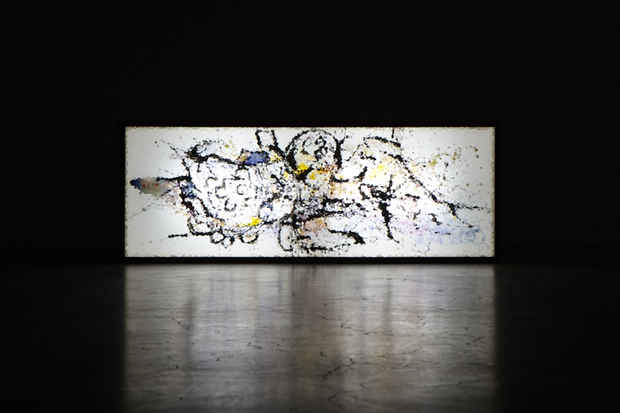“Postwar Japanese art from the 1950s” Exhibition
Taka Ishii Gallery

This event has ended.
Taka Ishii Gallery New York presents its summer exhibition showcasing works by seminal artists from the first decades of the postwar era in Japan.
The exhibition provides a curated overview of highly representative sculpture, painting, works on paper and photography by the formative artists, Hideko Fukushima, Hitoshi Nomura, Kiyoji Otsuji, Shuzo Takiguchi and Katsuhiro Yamaguchi, indicative of their own styles, as well as the dominant aesthetics of the groups they belonged to, during these initial three, and artistically influential, decades in Japan.
The 1950s were significant as a time of highly experimental and newborn artistic movements in Japan. Artists began to investigate various and uncharted means of expression in a society drastically changed after the trauma of World War II. In the end of 1951, fourteen young individuals with diverse backgrounds, and working in various mediums, gathered together under the influence of Shuzo Takiguchi, the noted critic and poet, and began the artist collaborative group, Jikken Kōbō (Experimental Workshop, active from 1951 – 1957) in Tokyo. While in Osaka, several years later, Gutai Bijyutsu Kyokai (Gutai Art Association, active from 1954 – 1972), an artist group began with fifteen artists, centered around the visionary core member, and painter, Jiro Yoshihara.
During the 1960s, as Japan underwent a period of profound economic growth, the definition of art expanded with new materials, radical subject matter and happenings. In the society, and primarily among the students and artists, there began an open challenge to the newly evolving social system, postwar Americanization and its military presence. Artists responded by documenting their society and selecting subject matter that had hitherto fore been utterly alien in artistic practice; using the land, ephemeral happenings, radical art practices and photography as an expressive medium. 1968 was a moment of intense conflict and rebellion, and social revolt took to the streets, as did the artists.
This provocative spirit and artistic investigation evolved into more cool and conceptual practices, becoming seminal with the 10th Tokyo Biennale in 1970, the first international art event, which combined contemporary artists such as Carl Andre, Sol LeWitt, Richard Serra and the Japanese, Jiro Takamatsu, Hitoshi Nomura, On Kawara and Tatsuo Kawaguchi, all showing works which shared an affinity for the minimal, the experimental and the conceptual that showed the relationships man and material, the same as the biennale’s subtitle, “Between man and matter”.
The gallery’s summer exhibition is meant to encapsulate the fervent artistic production of this highly significant period in Japan.
Media
Schedule
from July 07, 2015 to August 28, 2015